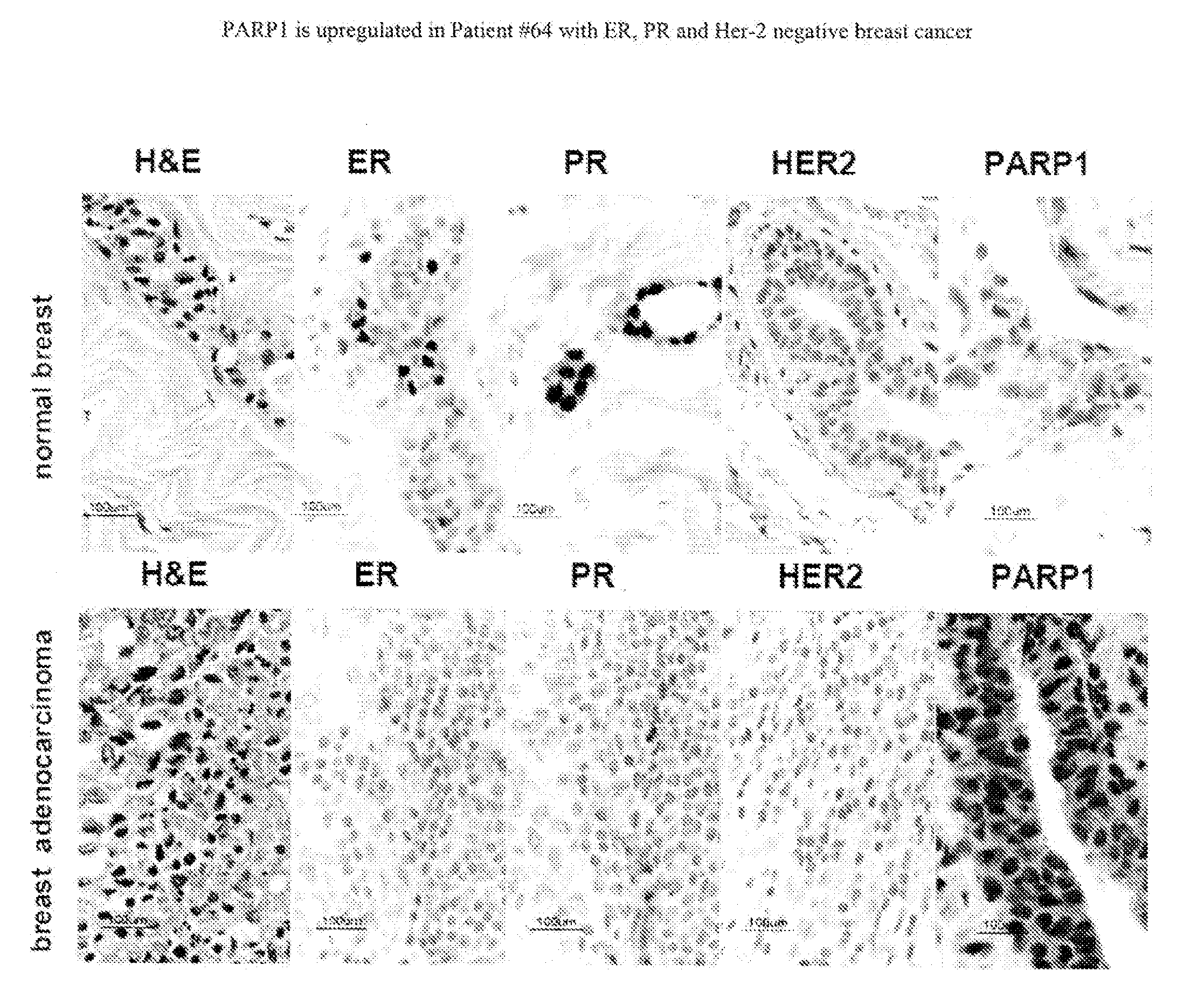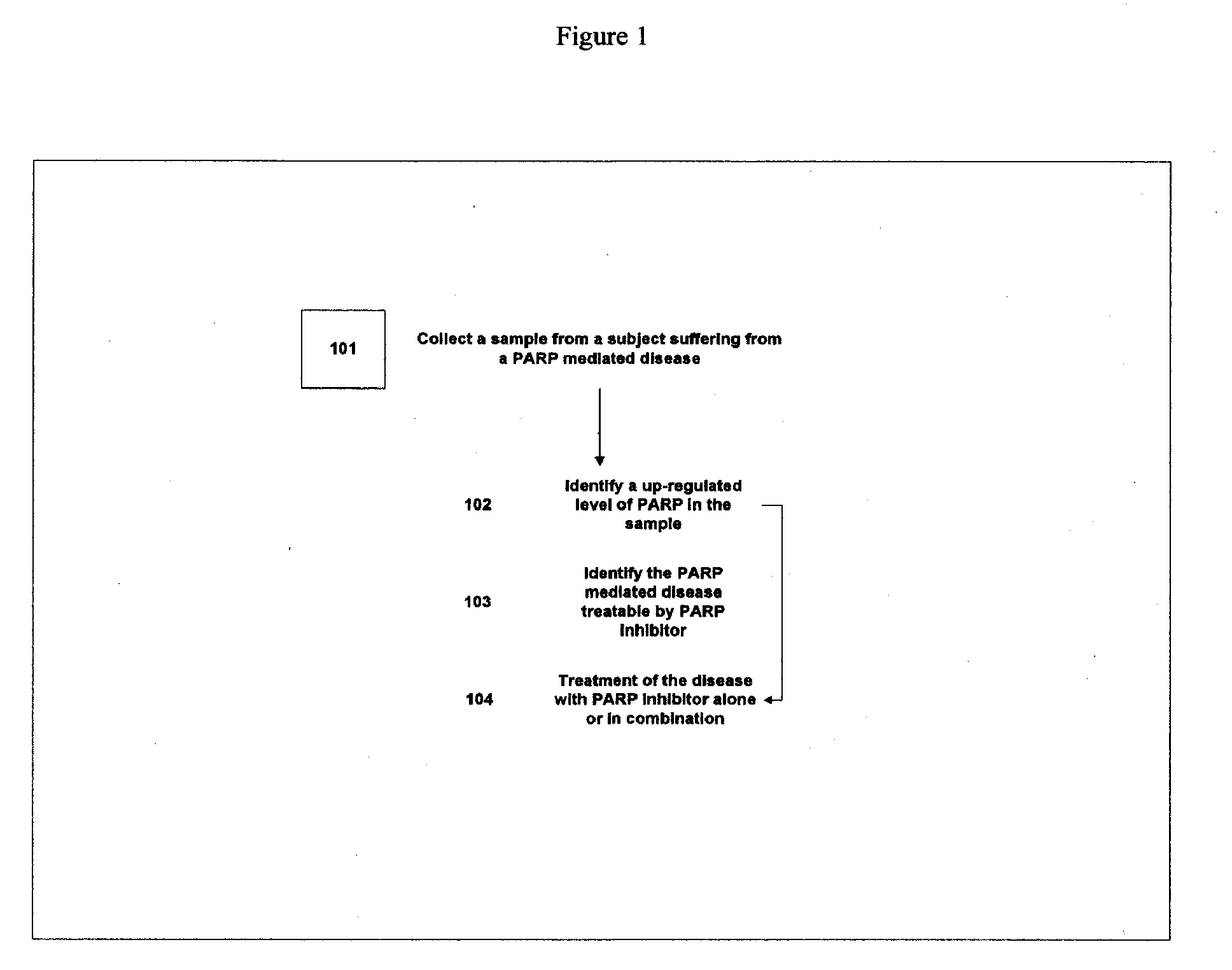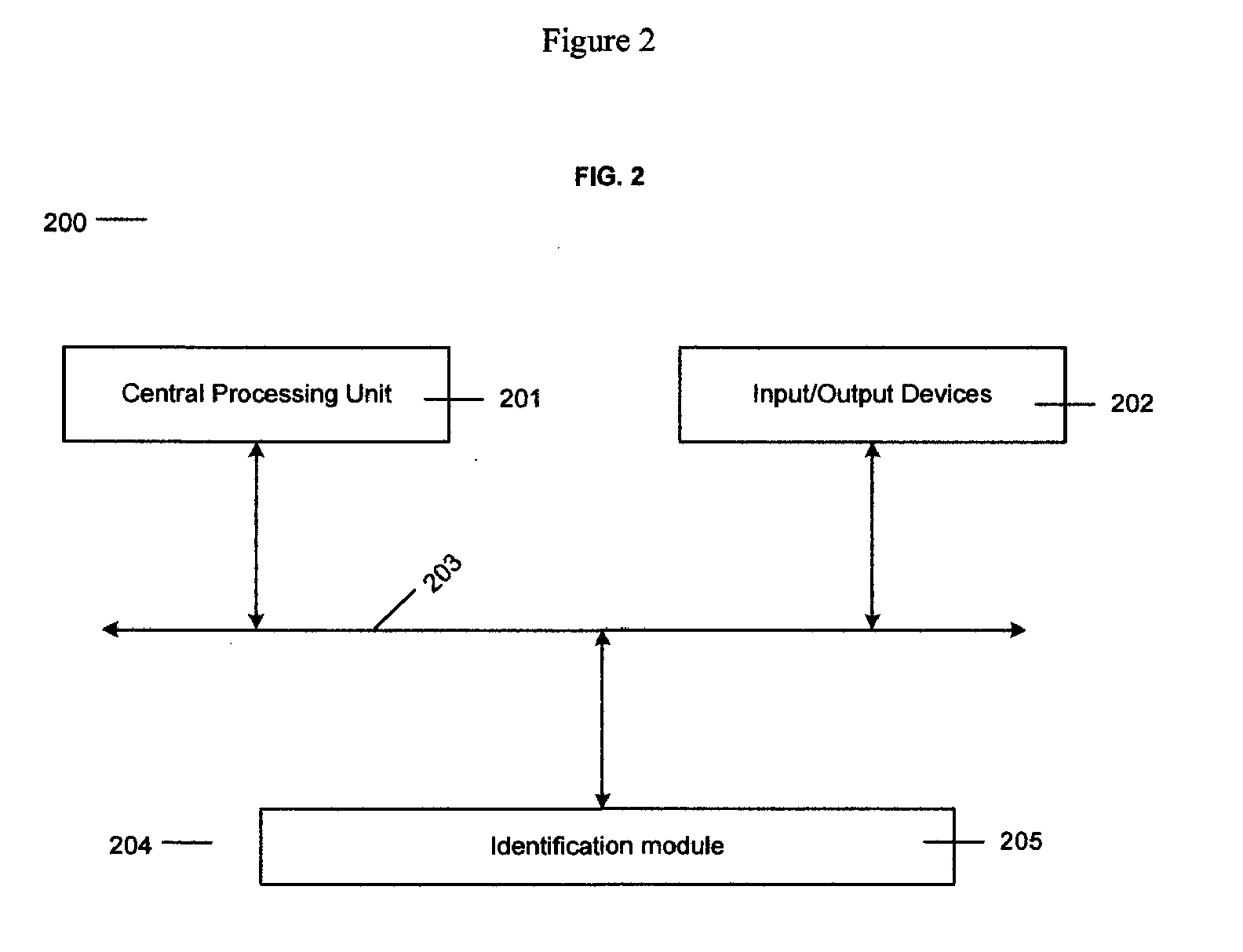Method of treating diseases with parp inhibitors
a technology of parp inhibitors and parp inhibitors, which is applied in the direction of drug compositions, instruments, and metabolic disorders, can solve the problems of cell dysfunction or necrosis, and the screening procedure is not as readily available for other cancers, and achieves the effect of positive respons
- Summary
- Abstract
- Description
- Claims
- Application Information
AI Technical Summary
Benefits of technology
Problems solved by technology
Method used
Image
Examples
example 1
[0234]GeneChip arrays have been widely used for monitoring mRNA expression in many areas of biomedical research. The high-density oligonucleotide array technology allows researchers to monitor tens of thousands of genes in a single hybridization experiment as they are expressed differently in tissues and cells. The expression profile of a mRNA molecule of a gene is obtained by the combined intensity information from probes in a probe set, which consists of 11-20 probe pairs of oligonucleotides of 25 bp in length, interrogating a different part of the sequence of a gene.
[0235]The gene expressions were assessed using the Affymetrix human genome genechips (45,000 gene transcripts covering 28,473 UniGene clusters). Approximately 5 μg total RNA from each sample were labeled using high yield transcript labeling kit and labeled RNAs were hybridized, washed, and scanned according to manufacturer's specifications (Affymetrix, Inc., Santa Clara, Calif.). Affymetrix Microarray Suite 5.0 softwa...
example 2
Expression of PARP1 mRNA in Human Normal Breast and Infiltrating Duct Carcinoma
Study Design
[0236]Normal breast and infiltrating duct carcinoma samples were identified in the BioExpress® System that were members of the sample sets defined for the ASCENTA® System. Each tumor sample was also assessed for its percent tumor annotation, which is a quantitative determination by the reviewing pathologist of the ratio of malignant to non-malignant nucleated cells present in a microscopic slide from a section taken adjacent to the processed sample.
[0237]A total of 237 independent samples were assessed in this study, with numbers of samples relative to teach of the IDC subtypes presented in Table A. Table A also presents sample numbers for each IDC subtype based on the percentage of the sample observed as tumor tissue.
TABLE ASample Numbers by Pathology Class and Percent TumorPercent TumorGroup25-5050-7575-90>90AllNormalN / AN / AN / AN / A68IDC15366058169IDC ER(+)10911535IDC ER(+) / PR(+)878326IDC ER(+)...
example 3
Tissue Expression of PARP1 in Ovarian Cancer and Normal Ovary
Study Design
[0282]Normal ovary and cancerous ovary samples were selected from the BioExpress® System that were members of sample sets defined for the ASCENTA® System. It should be noted that any cancerous sample may be represented in more than one subtype grouping. An example is shown in Table H for 10 selected ovary samples and their membership in multiple subtypes. For instance, sample GID 8757 is classified into the endometrioid type of cancer as well as its respective age. CA125 status, and stage subtypes. Some subtypes are exclusive of each other while others are not, yielding a full classification system for any individual sample.
TABLE HExample of Subtype Classifications for Selected Ovary SamplesNormalEndometrioid,Endometrioid,Endometrioid,Endometrioid,Endometrioid,Genomics IDOvaryClear CellEndometrioidOver 46 yrsUnder 45 yrsElevated CA125Stage IStage III4051Y9357Y7473Y31852Y15133Y12007Y7388YY8757YYYY2819YYY31903YYY...
PUM
| Property | Measurement | Unit |
|---|---|---|
| transmission | aaaaa | aaaaa |
Abstract
Description
Claims
Application Information
 Login to View More
Login to View More - R&D
- Intellectual Property
- Life Sciences
- Materials
- Tech Scout
- Unparalleled Data Quality
- Higher Quality Content
- 60% Fewer Hallucinations
Browse by: Latest US Patents, China's latest patents, Technical Efficacy Thesaurus, Application Domain, Technology Topic, Popular Technical Reports.
© 2025 PatSnap. All rights reserved.Legal|Privacy policy|Modern Slavery Act Transparency Statement|Sitemap|About US| Contact US: help@patsnap.com



